XRT Stray Light Study 2 -- Measurement and Correction.
Link to the 1st test page.
Link to the 3rd test page.
(26 May, 2014 by Aki Takeda)
1. Stray light correction project -- the 2nd test.
1.1 Purposes of the 2nd test.
- collect more light curves of the XRT eclipses.
- take stray-light images with longer exposures (Ti-poly).
- first trial to obtain Al-mesh stray-light images.
1.2 Test sequence.
The second test was performed on 15-May-2014, 18:19 -- 18:30UT.
- 18:00:00 -- s/c pointing to disk center (0,0)
- 18:03:00 -- usual synoptic program.
- 18:19:00 -- test sequence started (until ~18:30).
- -----------------------------------------------------------------------------------------------------------------------------------------------
- 250x250 pix, 1" resol., every 10 sec on AR12060, Ti-poly + G-band(VLS close).
- 1024x1024 pix, 2" resol., every 60 sec, Full-Sun, Ti-poly + Al-mesh.
- detailed parameters of the sequence (XOB#1A20).
- -----------------------------------------------------------------------------------------------------------------------------------------------
- 18:19:30 ------ XRT entering twilight zone.
- 18:27:00 ------ XRT s/c night entry.
- 18:39:30 ------ XRT s/c night exit.
- 18:39:30 ------ XRT SAA entry.
- 18:47:00 ------ XRT exiting from twilight.
- 19:02:30 ------ XRT SAA exit.
2. Result of the test observation.
2.1 Solar condition
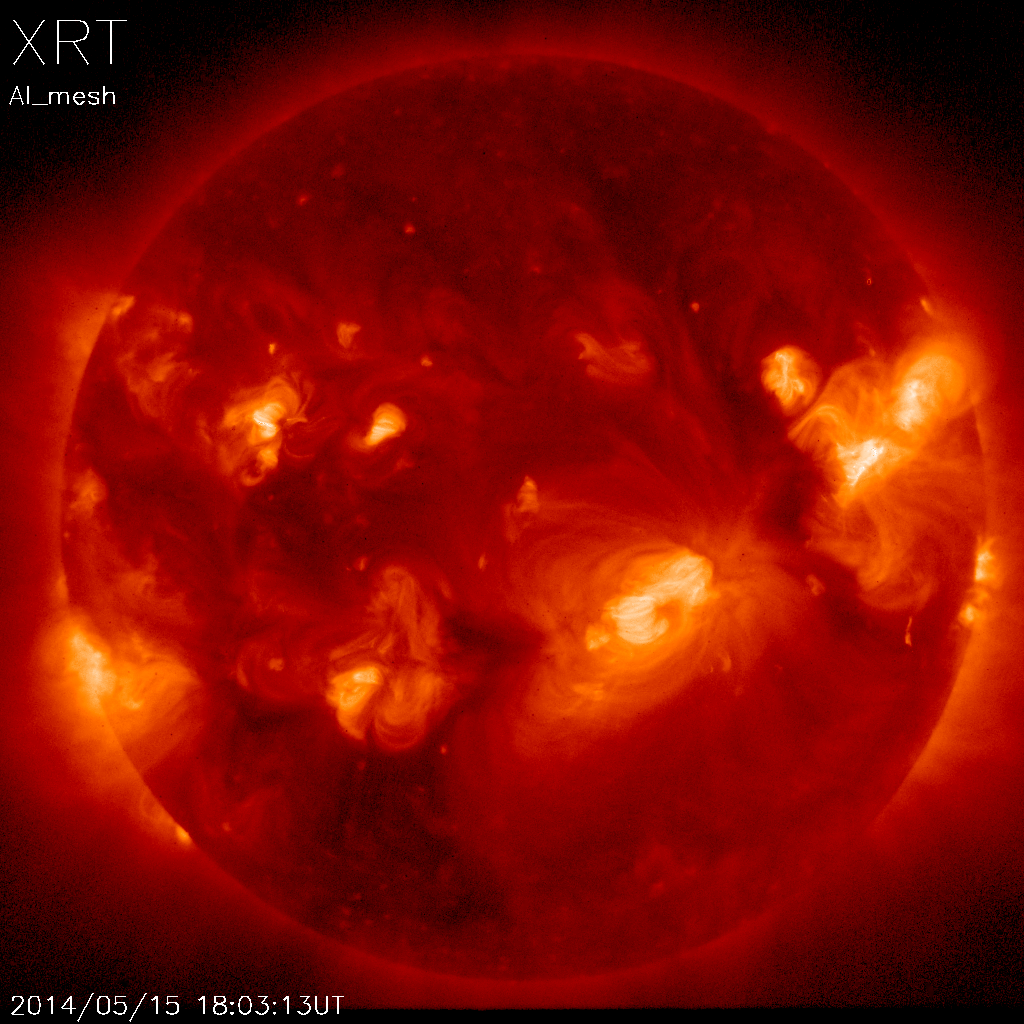
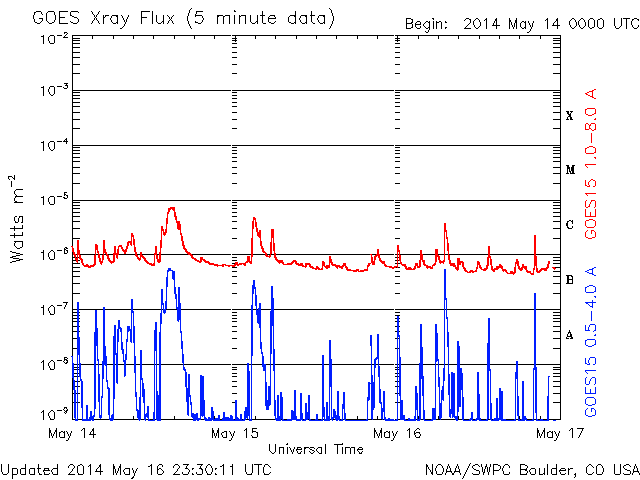
2.2 Sunset light curves
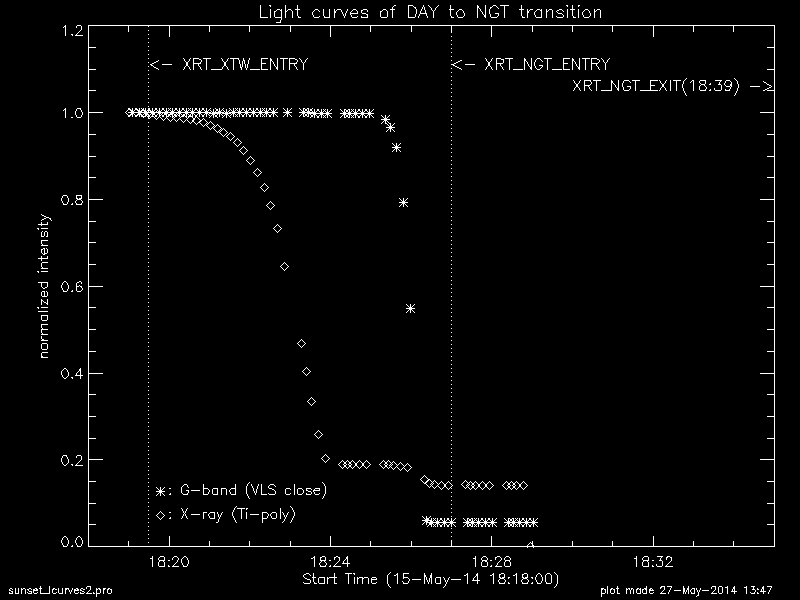
2.3 Stray light images
Ti-poly stray light images obtained (movie).
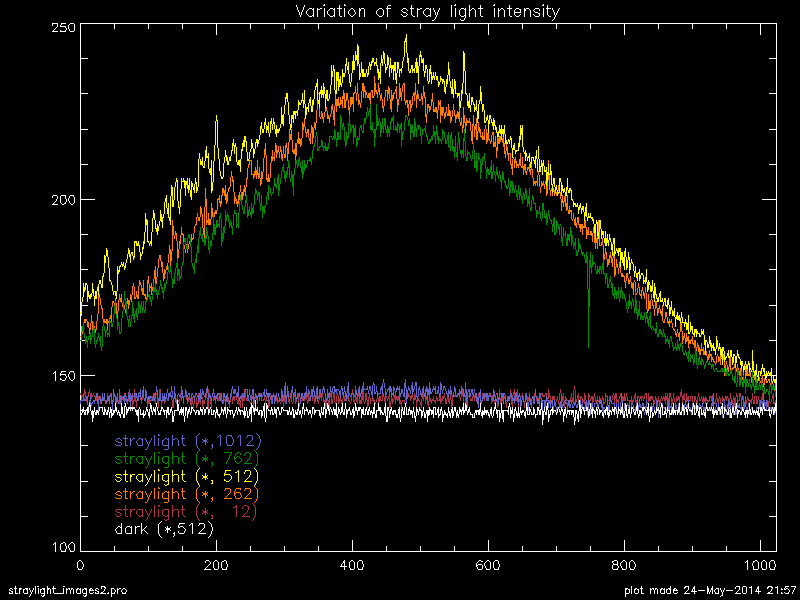
Al-mesh stray light images obtained (movie).
No substantial stray light observed with the Al-mesh filter.
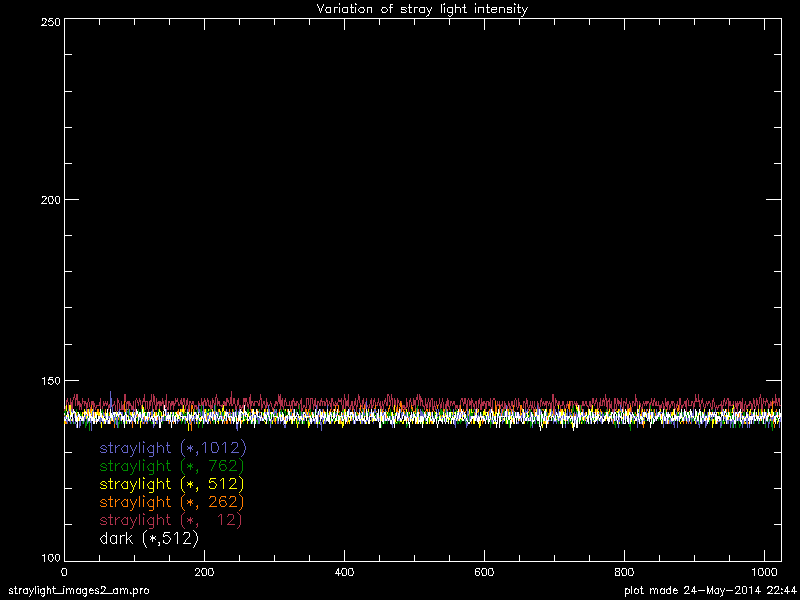
2.4 Image correction.
Correction of the synoptic composite image (Ti-poly) taken 8 minutes before the 2nd test.
| BEFORE [synoptic (triple) composite image] |
AFTER [stray light image (prep-ed) subtracted] |
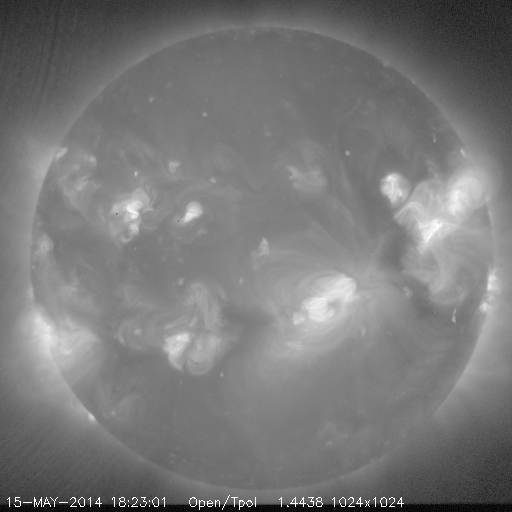 |
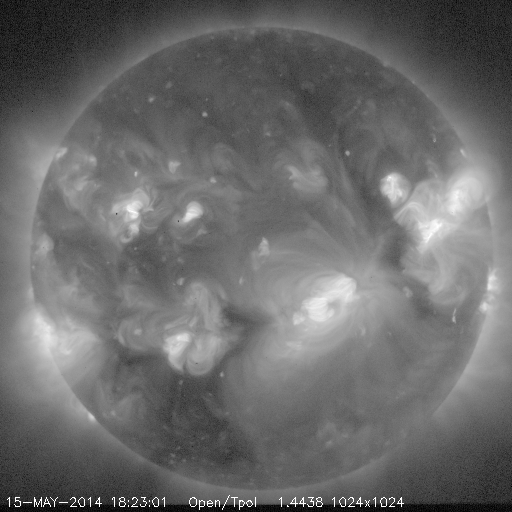 |
2.5 Comparison of the Stray-light images (1st and 2nd tests).
If the stray light images (taken at the same pointing) do not(or only a little)
vary with time, you can use a single stray image to correct images taken outside
eclipse season.
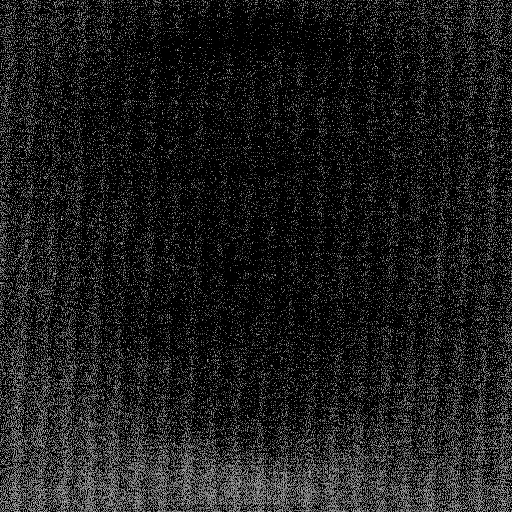 The left image is the difference image of the stray-light images taken
at the 1st and 2nd test:
The left image is the difference image of the stray-light images taken
at the 1st and 2nd test:
dd1: stray light image from the test 1 (6-May-2014, 17:53:55, exp. 256msec)
ii1: index(FITS header) structure of dd1
dd2: stray light image from the test 2 (15-May-2014, 18:25:03, exp. 1440msec)
ii2: index(FITS header) structure of dd2
[diff_img] = [dd2] - [dd1 * ii2.exptime / ii1.exptime]
Their difference image is almost featueless, with stripes (as we see in
dark frames) and subtle trace of solar disk.
Their intensity level on the average is zero with noise roughly
± 20 DN.

2.6 Just giving it a try.
Correction of April 2014 Ti-poly synoptic composite images with
the 15-May-2014 stray light image..
About the movie ...
Left images : synoptic composites BEFORE correction.
Right images : [Composite images] - [stray light image]
It is (at least) cosmetically OK to correct Apr-2014 Ti-poly images
by stray light image taken on 15-May-2014.
(The fudge factor not neccessary. I forgot to normalize the intensity
of the stray light image, while the synoptic composites are normalized.)
2.7 Another experiment.
Correction of 9-May-2012 image (first noticed visible light contaminated
image). This time, a fudge factor of 0.5 required to be looked decent.
Or putting it positively, we can cosmetically correct May-2012 images
with May-2014 stray-light image, if you allow a fudge factor of 0.5.
| synoptic (triple) composite image |
stray-light image subtracted |
stray-light image * 0.5 subtracted |
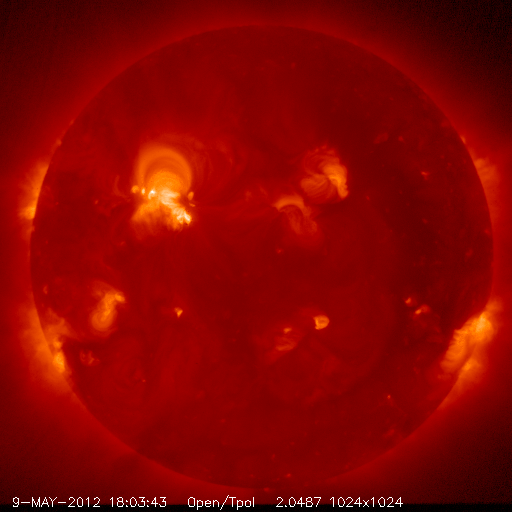 |
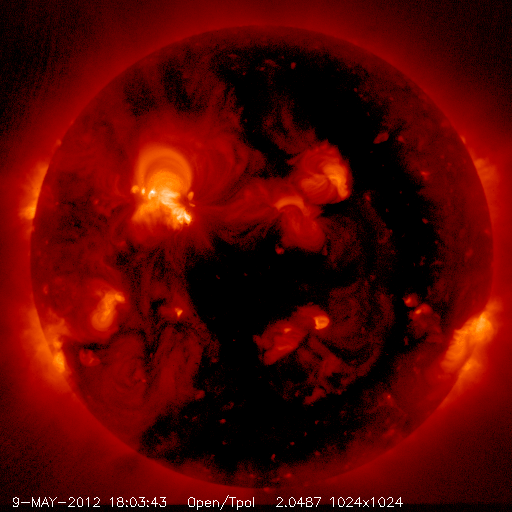 |
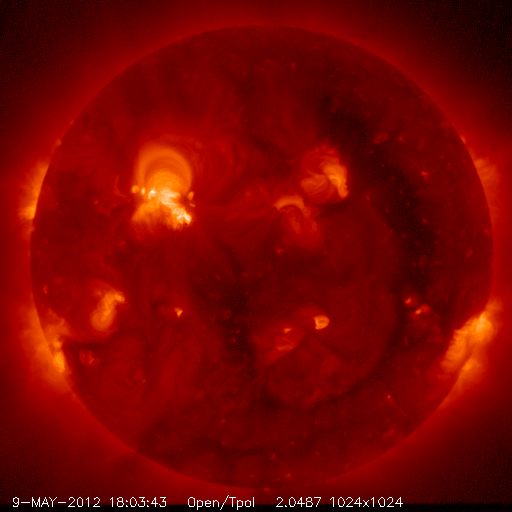 |








 The left image is the difference image of the stray-light images taken
at the 1st and 2nd test:
The left image is the difference image of the stray-light images taken
at the 1st and 2nd test:



